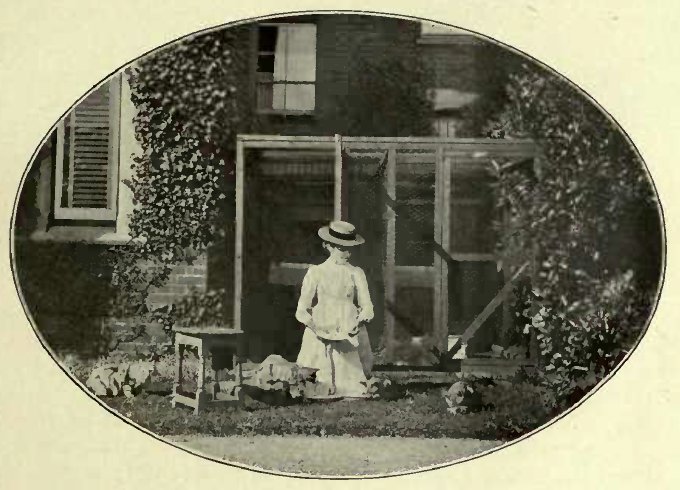VIII. SOME NOTABLE CATTERIES
Texte und Bilder aus “THE BOOK OF THE CAT” von Frances Simpson aus dem Jahre 1903
THE BOOK OF THE CAT
CHAPTER VIII
SOME NOTABLE CATTERIES

Before entering upon a description of the various breeds, it may be interesting to my readers to give a short account, with illustrations (photographs for which have been specially taken for this chapter), of the catteries of some well-known fanciers who have not confined themselves to any special breed or variety.
Lady Decies‘ catteries, at her pretty summer residence at Birchington-on-Sea, are indeed most perfect in their arrangements, and every detail for the comfort and well-being of the inmates is considered. The stud cats have separate single houses, with good-sized wired-in runs, and luxurious and cosy sleeping
The main cattery is in a sheltered portion of the grounds, and will accommodate a large number of cats. The runs are arranged with boxes, benches, chairs, and ladders, and the sleeping places, built of brick, are most comfortably fitted up. By a system of wooden blinds the strong sea breezes and the bright rays of the summer sun can be regulated. There are side blinds and top blinds. The floors of the spacious catteries are wood, covered with cork carpet, and they are raised about a foot from the ground, so that there is a free current of air passing under the boards, thus securing absolute freedom from any damp.
In the house there are three rooms set apart by Lady Decies for her pussies. In two of these the queen mothers have their families, and the other is used as the cats‘ kitchen.
The beds for the cats are specially designed by Lady Decies. The walls of the cats‘ rooms are adorned with pictures by Louis Wain, and there is a display of prize cards won by Lady Decies‘ famous cats. „Zaida,“ so well known as the winning silver female, is the privileged occupant of Lady Decies‘ boudoir, and here the aristocratic little lady makes herself at home on the soft cushions and couches.
The famous “ Lord Southampton “ is now in the possession of Lady Decies, and resides in one of the up-to-date catteries at Beresford Lodge. He was purchased at a very high price. Since his change of ownership he has not frequently appeared in public, but in the past he was a noted winner. It is, however, as a silver sire that he attained his success and made his name. It is well-nigh impossible to mention his numerous winning children. His name in a pedigree is a safe guarantee for quality and colour.
The two Siamese cats have warm quarters in the stable cottage.
Lady Decies‘ pets comprise both long- and short-haired cats. Among the latter „Xenophon“ is generally considered as the best specimen of a brown tabby, and has a long prize-winning record. A woman and a boy are kept to attend to the wants of these aristocratic animals.
The Bishopsgate cattery may be said to have won a worldwide renown, and those who have been privileged to visit the ideal residence of Lady Marcus Beresford will agree with me that it is impossible to give any idea either by photography or description of the delightful dwelling places set apart for the pussies belonging to this true lover and fancier of the feline race.
There is the cat cottage, where the attendant has her rooms, and where the other apartments are especially fitted up for the cats. Here the Siamese have their quarters, and the sun streams in at the windows, which face due south. Opposite to the cottage, as may be seen in the illustration, are some of the cat houses, and in the centre is the kitchen. The cat attendant stands at the door, and some of the pussies are having their mid-day meal. The celebrated „Blue Boy II.“ occupies a house, and in the background is a grass run, securely wired in, which is used as a playground for the pussies. In the hot summer weather this is shaded by the lovely spreading beech trees of Windsor Park.
The stud cats‘ houses are splendidly arranged with sleeping places and nice large runs. The space in the centre in front of these runs is used as an exercise ground for the females and kittens. The garden-house cattery is, indeed, an ideal one, being a bower of roses in the summer-time, and in winter an ivy-clad retreat. This house is divided into two apartments, and these are generally used for the queen mothers and their families. On the shelves along the windows the pussies sit and sun themselves.
Truly the lives of inmates of the Bishops-gate catteries are spent in peace and plenty, and when their little span of life is over they find a resting place under the shadow of the grand old trees, and a little white tombstone with a loving inscription marks the spot of pussy’s last long sleep.
Lady Marcus Beresford has had almost every breed of cat under the sun at her catteries, but of recent years she has specially taken up silvers, blues, and Siamese, and a grand specimen of each of these varieties is in the stud at Bishopsgate. Amongst some of the celebrated cats owned by Lady Marcus Beresford I may mention „Lifeguard,“ a grand orange of massive build; „Tachin“ and „Cambodia,“ two imported Siamese with perfect points; „Cora,“ a tortoiseshell-and-white of great beauty, and „Kismet,“ a brown tabby of exquisite shape, both imported; and „Cossy,“ a smoke that has found a home in America. At the present time three of the most notable inmates of the Bishopsgate cattery, representing blues, silvers, and Siamese, are „Blue Boy II.,“ „Beetle, “ and „King of Siam.“
One of the largest catteries in Scotland, where the fancy grows pace, is owned by Mrs. Mackenzie Stewart, of Seagate House. Irvine. Mrs. Stewart has possessed several notable cats of different breeds. Her blue stud cat „Ronald“ has made himself a name in the south of England as well as in the north. Mrs. Stewart has had silvers, creams, brown tabbies, and is now the owner of the celebrated black. stud cat „Dick Fawe,“ who has sired many winning kittens. The severe weather of this part of Scotland seems to suit these Persian cats, for a healthier, hardier set of pussies one could not wish to see than those disporting themselves in the pleasantly situated catteries of Seagate House. Mrs. Mackenzie Stewart is a most enthusiastic fancier, and often takes the long journey down South to bring her pets to the London shows. She has acted as judge in Scotland and England, and a contingent from the Seagate cattery is generally to be seen and admired at most of our large shows.
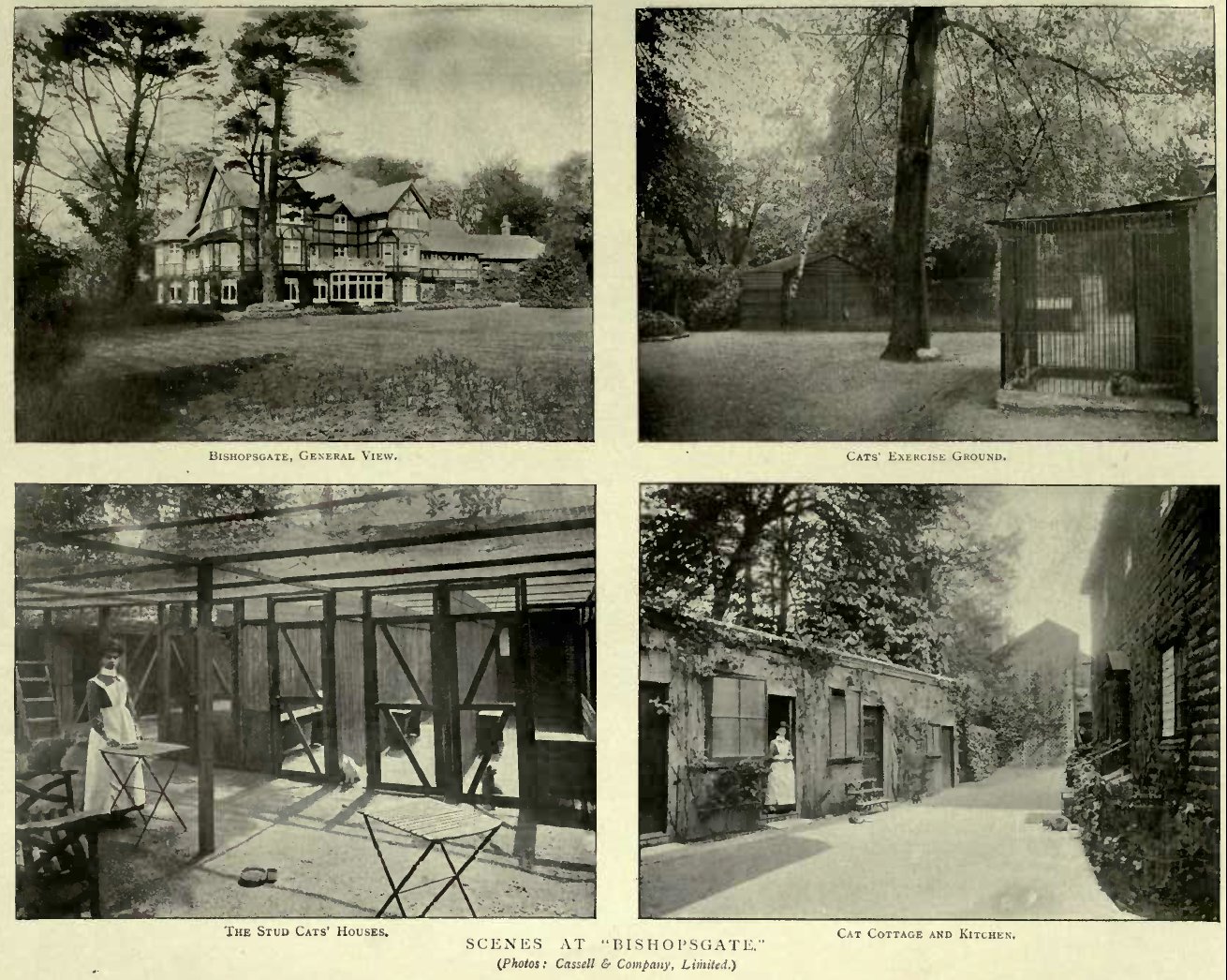
To old fanciers and exhibitors the name of Mrs. H. Warner is familiar.
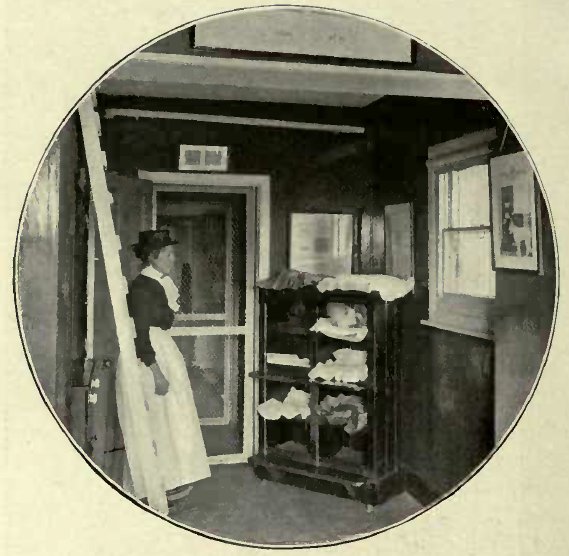
It was as Mrs. Warner, in 1889, that the Hon. Mrs. McLaren Morrison first exhibited a black cat called „Imp“ at the Crystal Palace Show; and as black cats are said to bring luck, this puss took a first, and, thus encouraged, his owner commenced her „catty “ career. In the following year, I note, by the catalogue, that Mrs. H. Warner had fourteen entries, and amongst these were two imported cats and the celebrated black Persian „Satan, “ who departed this life in 1902. As late as 1897 this superb fellow, with glorious orange eyes, won everything he could (in spite of his age) at the Crystal Palace. There remains a worthy son of this worthy sire at the Kepwick cattery, named „Lucifer.“
It was in 1890 that Mrs. McLaren Morrison, then Mrs. H. Warner, made her name as an exhibitor of white Persians; for no less than six of this breed put in an appearance, and gained prizes at Sydenham. Mrs. McLaren Morrison writes:
„I have always been lucky with black cats, both long- and short-haired; but I especially love white Persians, and, in fact, at one time I owned a ‚white cattery.‘ I may say I still have some good specimens – namely, ‚Muse-fer,‘ ‚Queen of the Pearls,‘ and ‚Lily.‘ I love the imported cats, and always get them when I can. I have nine now at Kepwick. One of these hails from Patagonia and one from Afghanistan. My cattery at one time was twice again as full as now; but my losses have been great, and I have reduced the numbers so that I may give more attention to the young stock.
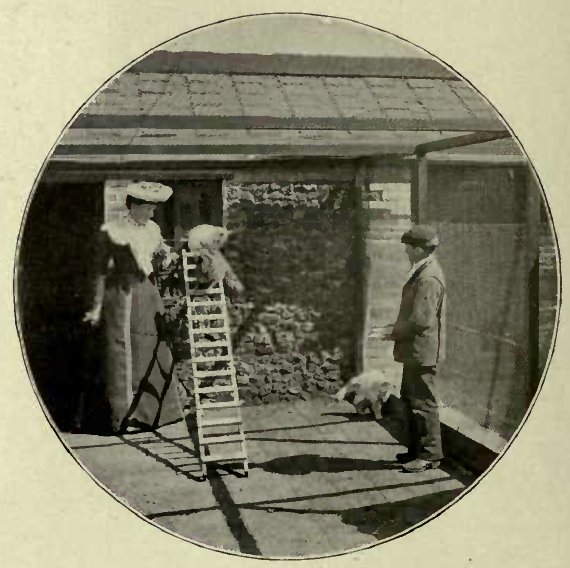
„It is only recently I have really gone in for orange Persians, encouraged by the wins of ‚Puck‘ at the Botanical. I love this beautiful variety, but consider the queens of this breed very delicate. I have owned some fine blues at different times, and purchased for £25 a beautiful fellow, bred from ‚Beauty Boy,‘ at the Crystal Palace many years ago; but, alas! he came home only to die. Foremost amongst my blues ranked my late Champion ‚Monarch,‘ who held the Beresford Cup. Of late years I have taken up silvers. My first Chinchilla was Champion ‚Nizam,‘ ancestor of such cats as ‚St. Anthony‘ and ‚Ameer.‘ I bought ‚Nizam‘ at the Crystal Palace in the early days of silvers, and he only took second prize, because, I was assured, he was ‚too light‘ for first. I have a few Russians. I am most devoted to my pussies, and have tried to persevere in breeding good stock in the face of very great difficulties. I do not much care about running the risk of showing, but a true fancier likes to support all well-arranged cat shows. “
Mrs. Collingwood, of Leighton Buzzard, is a most ardent lover of cats, but it is only of recent years that she has been before the public as a fancier and exhibitor. During this time, however, many have been the honours showered on the lucky inmates of the Bossington cattery.
Mrs. Collingwood has great difficulty, so she tells me, in keeping her number of cats down to about thirty ! She likes these to be equally divided between long-and short-haired pussies; so there are all sorts and varieties. Blues have been great favourites, and Mrs. Collingwood is on the Blue Persian Cat Society Committee. „Royal Bobs,“ a big, massive blue male, has done a lot of winning. He was bred by the Princess Victoria of Schleswig-Holstein. His sister „Jill“ also inhabits one of the twelve cat-houses distributed over five acres of the Bossington grounds. These smaller houses are mostly on wheels. The larger houses are kept for females and their families, and sometimes a corner of the hay-loft is set apart for a nursing mother. The male cats have their liberty during the morning, and then the females enjoy their afternoons out. Mrs. Collingwood does not keep a stud cat, but there are neuter pets that have their run about the house, and have their meals in a corner of the dining-room. Mrs. Collingwood intends going in strongly for smokes in the future; and although possessed of extremely good short-haired cats, this ambitious fancier is desirous of breeding a perfect silver tabby and a likewise equally perfect orange tabby. „James“ is a beautiful specimen of a silver tabby, and during this year alone has won eight first prizes.
At Altrincham he had the honour of claiming championship and silver medal for the best cat in the show, beating all the longhaired cats that generally carry off this coveted prize; and at the Crystal Palace he was the admired of all admirers, with a number of prize tickets covering his pen. I know many cat-loving people, but I do not think I have ever seen greater devotion shown to the feline race than is displayed at Bossington. Mrs. Collingwood is ever ready to support cat shows by entries, by guaranteeing classes, and by giving handsome prizes. Her cats are always shown in the pink of condition, and it is seldom they appear in the pens unless their devoted mistress is in attendance. Mrs. Collingwood kindly had the accompanying photographs specially taken for this chapter.
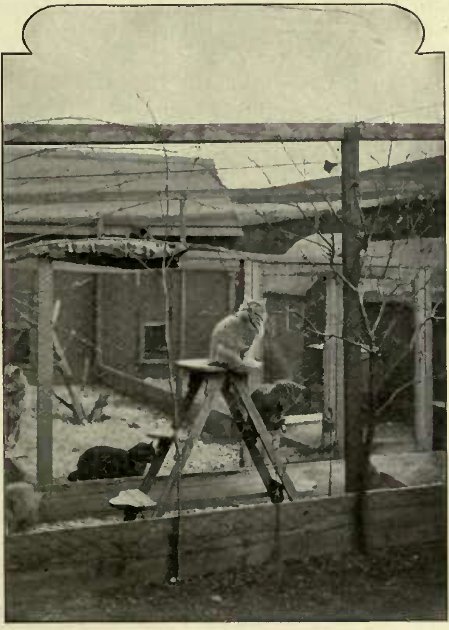
Perhaps no name is better known in the cat world than that of Mrs. Herring, of Lestock House, Lee, who has for nearly twenty years been a prominent fancier and breeder of both long- and short-haired cats. Mrs. Herring is a member of the National Cat Club Committee, and also belongs to several of the specialist clubs, and is a member of the Cat Club and the Northern Counties Cat Club. At all the principal shows this enthusiastic lady is a prominent figure, and in the quantity and quality of her exhibits she generally leads the way.
At some of our large shows Mrs. Herring has entered from 25 to 30 cats; and I have known and seen these arrive with their mistress in a large omnibus or van. It is no light undertaking to prepare such a number of pussies for show, and then to convey them carefully to the place of exhibition.
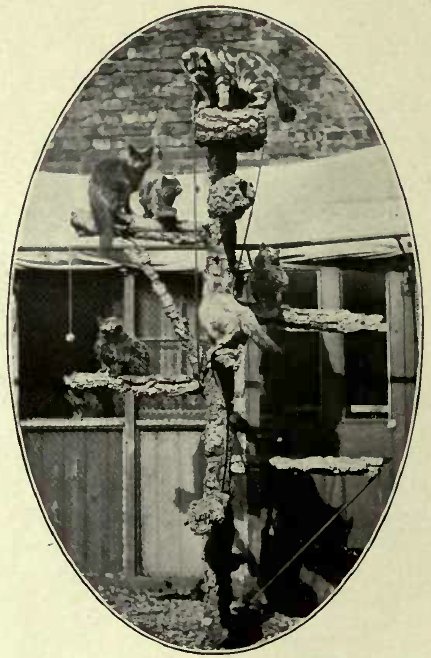
Mrs. Herring started with a short-haired silver tabby called „Chin,“ and then turned her attention to long-haired brown tabbies; and although every variety of cat, both long- and short-haired, may be said to have existed from time to time in the Lestock catteries, yet it is with tabbies perhaps that Mrs. Herring has chiefly made her name and fame. Champion „Jimmy“ was a superb specimen of a well-marked silver tabby, and he carried everything before him in the show pen. He passed away in 1900, and I do not think we shall see his like again. Amongst many celebrities in the feline world which have been born or bred, or have found their habitation at the Lestock cattery, I may mention „King Saul,“ the noted tortoise-shell torn who still holds a unique position at our shows, and won the Coronation Cup at the Botanical show. „King Alfred,“ a longhaired silver tabby, and „King David,“ a massive blue, are also well-known winners of the present day. Mrs. Herring bred some sensational silver tabby long-haired kittens, and two of these – “ The Duchess “ and
„Princess Lestock“ – were exhibited respectively at the Westminster and Crystal Palace shows, and both were speedily claimed at the high catalogue price. „Floriana,“ a huge, handsome long-haired brown tabby, who formerly belonged to Mrs. Herring, has recently found a home in America. Siamese and Russian cats have not been strangers to this cattery, where sometimes the number of inmates has been over forty! Within the last few years Mrs. Herring has had to reduce her stock, owing to the complaints of neighbours, who showed no sympathy with the feline race, and some excellent, well-arranged cat-houses had to be removed, as they somewhat encroached on a neighbouring garden wall. It must have been a trying time, and the weeding-out process a most difficult one, for such a really warm-hearted and devoted a fancier as Mrs. Herring, whose pussies are all pets, and who personally supervises her cattery at Lestock House.
It is not given to all, particularly in large towns, to have at their disposal such an amount of waste space as their more fortunate brethren of the country. I have therefore asked Mrs. S. F. Clarke, whose cat photographs have been a delight to all our readers, to tell us how she manages in her town residence at Louth. Here are her notes.
Breeding Blue Persians In Limited Space
„The successful breeding of blue Persian cats in a space so limited that a grass run or green trees are things to be desired rather than attained, requires nice judgment and great care. The space at my command for cat keeping and breeding purposes is only a back yard, some 14 yards long by 6 yards wide. This very limited space is further curtailed, on one side, by my husband’s laboratory; while the cattery and its covered run cut off another strip at the end, of 7 yards by 2 yards, reducing the ground available for open air exercise and run to a patch about 18 feet by 12 feet, and a flagged portion some 21 feet by 6 feet.
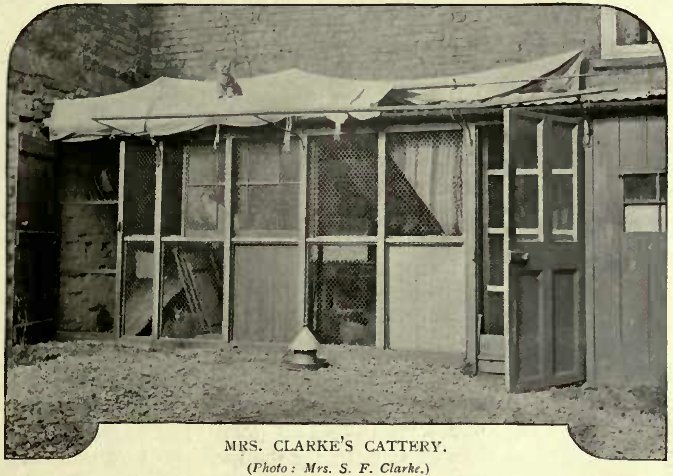
„The space between the front of the laboratory and the flagged path being occupied by a small independent house and covered run, is very useful either for isolation or as a separate home for growing kittens. The boundary wall is supported by 4-foot wire netting supported by 3-foot iron stanchions, thus allowing a free edge at the top of about 12 inches to be bent inwards and left loose. This I find a sufficient safeguard against my own cats getting out or strange cats getting in – a very important matter at all times, but especially so at certain periods, if breeds are to be kept pure and pussy not allowed to make her own arrangements.
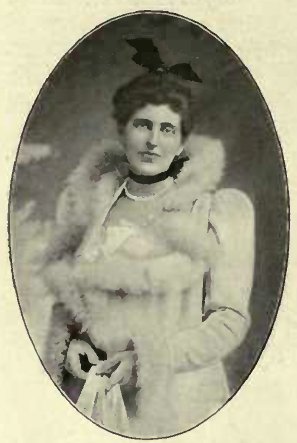
„If I were asked for the very best design for building, fitting up, and furnishing a small cattery, I fear I could only answer that requirements differ so in individual cases that it is impossible to draw a hard-and-fast line that will meet all circumstances. Here is a photo of my own (p. 107). It is the outcome of my personal experience, and answers my requirements fairly well. It is a lean-to structure, about 7 yards long by 2 yards wide. The back and one end is formed by the north and west boundary walls, while the east end joins the dwelling-house, thus giving it a south aspect and complete shelter from north and east winds. It is divided into two unequal portions, the smaller (east) portion, 6 feet by 6 feet, forming the cat-house proper; the longer portion is the covered run. The front of the house is built of 1-inch wood, with a lining of wood leaving an air space of about 3 inches between the outer and inner surface of the front and dividing partition. The roof is of corrugated iron, with a ceiling of wood about 4 inches below. This arrangement of double walls and roof secures reasonable warmth in the winter, but not quite sufficient coolness for mothers and kittens during the height of the summer.
So the roof is then covered with a large white sheet hooked to the wall about 12 inches above the roof and carried over a rail in front about the same height, and there securely fastened. This arrangement insures not only a reasonable temperature, but also a never-ending source of exercise and amusement for both cats and kittens, some gambolling above, while others hide beneath the sheet. An ordinary sun blind along the front completes the summer arrangements. The front of the covered run is closed in with inch mesh wire netting from ground to roof, fitted on the inside with removable shutters, 18 inches high, and, above these, removable window-sashes, closing in as desired. These are held in place with turn-buttons, so they are easily removed or replaced in a couple of minutes, a great convenience in wet or changeable weather, and proving very cosy in the winter. The run is fitted with shelves for the cats to lie upon, a table, sleeping boxes, earth pans, two chairs, and an artificial tree covered with cork, which is a source of great pleasure when the cats are confined by bad weather to the run.
The open run consists, as before mentioned, of a space about 18 feet by 12 feet; this is covered with gravel (which in such limited space should be renewed at least once a year), with the exception of a strip some 18 inches wide by 6 feet long on the west side, and two small corners on the east side, reserved for grass. This grass reserve, which is most important for the keeping of Persian cats in good health, is renovated every spring with fresh lawn seed, and should either of the patches suffer unduly from special attentions from the pets, it is wired in so as to protect it until it recovers. By this plan my cats secure a supply of grass all the year round. In the centre of the gravel space I have another artificial tree (see photo), about 8 feet high; it is as great a favourite as the one in the run, and as it is hung with a loose cord, a few ping-pong balls, etc., it is a never-ending source of fun and frolic. To supplement the ground space, I place ladders leading to the tops of the roofs of the outbuildings and cattery, which afford extra space for exercise and a charming, interesting, and envious outlook for the cats into my neighbour’s garden.
It is surprising how soon the kittens learn to climb up and enjoy the roofs.
„The sleeping house contains two wired-in runs going round two sides, about 2 feet by 12 feet long, containing nest-box, earth pan, etc. These are very useful for keeping a queen and litter of small kittens in. There are also two smaller wired-in runs, 2 feet by 6 feet, fitted like the larger ones, so that a cat may be shut up at any time if necessary. The queens sleep in the smaller runs in the winter. Beneath the runs a small cupboard is very useful for odds and ends of all kinds.
„In so limited a space cleanliness is of the utmost importance. The house and runs should be swept out, and the earth pans should be changed, washed, and disinfected every day. The question of supplying dust for the pans may prove a source of anxiety to the breeder confined to a limited space. In winter the dwelling-house fires supply about sufficient ashes daily; in summer I am compelled to fall back upon sawdust, which answers the purpose very well, only entailing a little extra litter in the runs and more grooming of the coats. Whatever the difficulty in this direction, it must be overcome and the pans daily changed. The floors and shelves, both in cat-house and covered run, should be washed with hot water containing some disinfectant at least once a week, and the wired-in runs for cats and kittens thoroughly done out with hot Sanitas distemper every time they are required for fresh occupants. All bedding should be changed at least once a week, and as little of it used as possible in summer.
All plates, etc., used for food must be thoroughly washed after each meal.
„In a space such as I have described my cats have to be kept, for they are allowed into the dwelling-house by special invitation only; but they each receive this treat at least once during the day.
„As to the number of queens: two or three are ample where space is so limited. Where the fresh air run is a back yard, blues are the very best of all colours, as with a daily grooming they always look clean and presentable. In a space such as we are considering I would not on any account recommend the keeping of a stud cat. The want of necessary exercise would be cruelty to it; and the very limited surroundings unfair to those who might wish for his services.
„It is of imperative importance that the queens you commence with be of pure blue pedigree; if prize-winners so much the better, as their kittens will sell more readily.
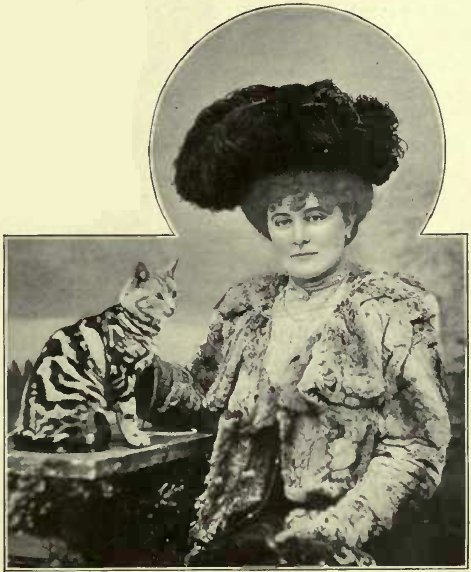
„When mating, be sure that your queen is in perfect health, and do not mate her too young – in my opinion twelve months is young enough, in the interest of mother and family. See that the stud cat chosen be also of the best possible strain. That he be a noted prizewinner is of less importance than that he should be able to produce kittens that will win. He must have size, bone, strength, soundness of colour, length of coat, and good eyes. These are indispensable requirements if good blues are to be produced. He should especially be strong in those points where your queen may be somewhat weak; thus if the queen be deficient in length of coat or frill, or in colour, shape, or boldness of eye, see that the selected stud-cat excels in those points, and so, as far as possible, correct and balance the points required between the parents. One must not expect to find perfection in any one cat. By using care, judgment, and forethought in mating our pets, we shall go a good way towards establishing in our strain the points necessary to build up the perfect blue Persian.
„All my kittens have been born in a Japanese dress basket, with the lid standing on its side and the bottom half thrust into it cradlewise. The outside of the basket proper is trimmed with a flounce, which helps to keep out draughts; over the top is thrown a small cloth table-cover, which covers, at will, the whole or part of the opening, thus making the little one’s house a pretty thing to lock at. When any one of my queens is about to have a family I ‚flee-flea‘ her, which I consider most essential for the future comfort of both mother and kittens; then I bring her into the house three or four days before the expected event. For the time being the expectant mother becomes the house cat. I let her find her own bed, which has already been prepared for her, by carefully closing all other places she might be likely otherwise to choose. When her time comes I stay with her during her trouble; but never interfere unless it is absolutely necessary.
„A few encouraging words, and the fact that one is near, seems to give her comfort. If a queen shows much exhaustion, I give a little Brand’s Essence with a few drops of brandy in a spoon: but if all goes smoothly I let well alone. There is no need to press food upon the mother; she will not require it until some time after the births are complete. A little warm milk or gruel offered between the births may sometimes prove a comfort; but many queens will not touch it. For about three weeks, that is to say until the little ones creep out of their beds, I keep the queen and her family in the dwelling-house with me, changing her bed every other day. After the first week I make it a rule to handle the kittens at least once a day, and if the queen has more than three to bring up I begin, at two weeks old, feeding them three times a day with a few drops of warm sweetened milk from a spoon, increasing the quantity very gradually as they grow. I never wake the kittens to feed them – sleep is as necessary as food; but always arrange to feed them just after the little ones wake; they are then hungry, and that is the best time to assist and relieve the mother.
It is surprising how soon the kits enjoy being fed and look out for the friendly spoon.
„As soon as the little ones can get out of their bed they must be introduced to a shallow tin filled with ashes or earth. I prefer ashes to sawdust for very little kittens, and I find at a month old they will regularly use it. This early lesson in cleanliness is invaluable, as later on, with reasonable care, they never forget it. When the kittens are from three weeks to a month old I remove them, with the mother (or foster-mother), to their own little run in the cattery, where I visit them three or four times a day. When they grow stronger, and as early as the weather will permit, they are introduced to the open-air run, the sunshine, and the other cats.
„I begin the grooming as early as possible, daily brushing the little things in their bed or on my lap; it improves the fur, and the more they are groomed the sooner they get to like and enjoy it. When grooming kittens two or three months old, I generally have three or four trying to get under the brush at the same time, endeavouring to push the favoured one out of the way. I am strongly of opinion that the frequent handling of kittens does not do them any harm, but does tend to improve their temper and increase their gentleness. When I have callers the kittens are invariably fetched, introduced to, and fondled by the visitors, so that they become not the least afraid of strangers; as a result, when they go to new homes they come out of their basket without, fear, making themselves immediately at home, much to the comfort of themselves and their new owners.
„The best time to dispose of kittens is at about eight weeks old. Breeders with limited space must sell young and quickly, keeping only the one or two of the season they may either wish to show or turn into next year’s brood queens. To get overcrowded is to court disease and disappointment, so sell early for the best price you can get; but sell you must, even if the price does not seem anything approaching the true value of the kittens. The first loss will be the known loss – most certainly far less than that involved in the risk of keeping one or two more kittens than your space should accommodate.“
